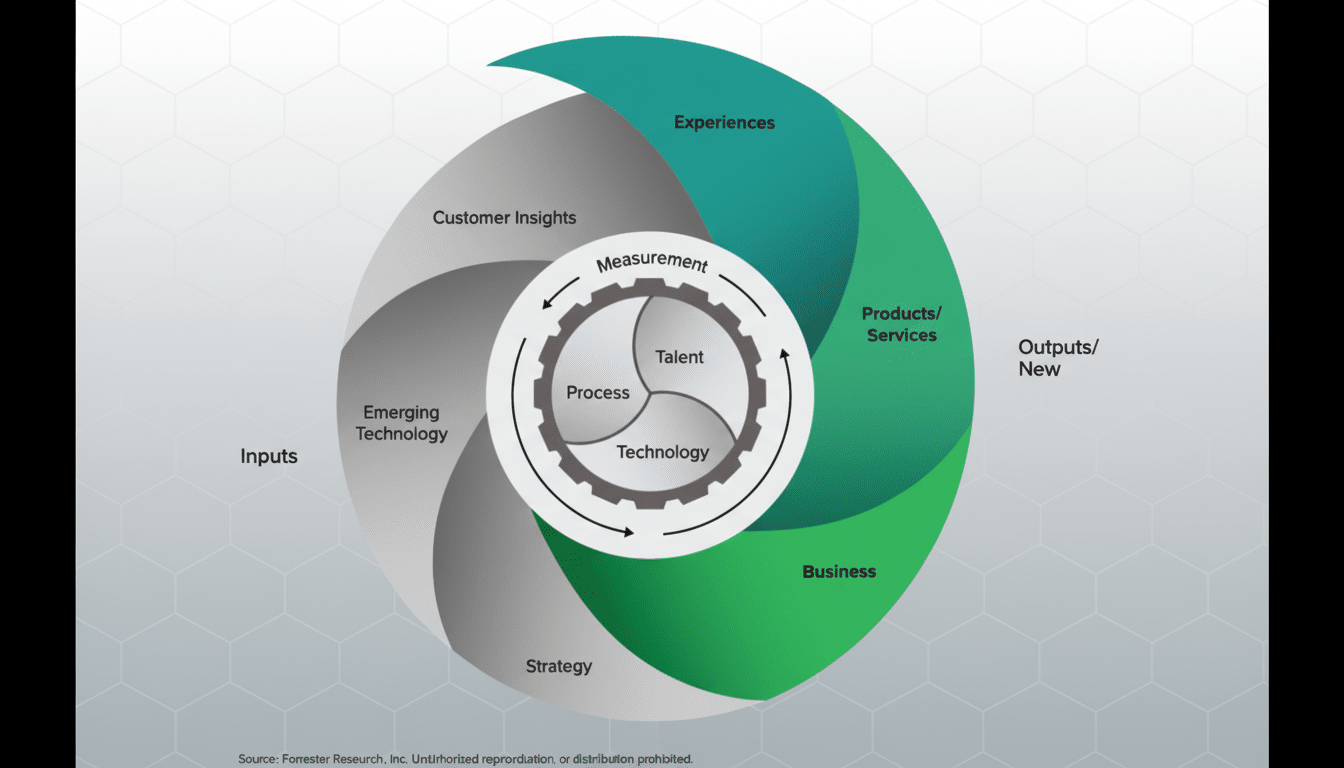Artificial intelligence is losing its red-carpet mystique and landing in someone’s workplace or living room. That’s the crux of a new Forrester forecast, which predicts that by 2026 AI will become “frumpy but functional” — less eye-catching, more reliable and part of business plumbing rather than up on stage.
The lesson is not that AI is dying. It’s that the hype cycle has peaked. Anticipate cooler heads, hard-nosed metrics and a switch from resonance-generating proofs of concept to silent systems that do the sweating companies really want performed.
- Forrester Declares the Hype Peak and a Market Reset Ahead
- ROI Reality Checks Change the Shape of Budgets
- Governance Moves Beyond Slogan to Structure
- Upskilling and the New AI Workforce Take Center Stage
- Model Sprawl Versus Agentlakes in Enterprise AI Stacks
- This Is What Useful AI Looks Like in Practice Now
- The Takeaway for Leaders as AI Becomes Everyday Tech

Forrester Declares the Hype Peak and a Market Reset Ahead
Forrester has indicated that a market correction has occurred as executive teams restrain spending and demand stronger evidence of value. The firm is projecting that nearly one in four firms will phase out AI investments by 2026 — not because they are giving up but rather to regroup around clearer roadmaps, stronger data foundations, and guardrails that minimize risk.
It’s a familiar pattern from previous tech waves, and one that has been echoed in the initial response to AI technologies. After the breakneck adoption of cloud and mobile came periods of integration, cost optimization and governance. AI is reaching that operational phase as well, where maturity trumps novelty.
ROI Reality Checks Change the Shape of Budgets
Forrester’s warning highlights a disconnect between what vendors promise and the enterprise quantifiably achieves. Independent research has been equally unsubtle: A well-cited analysis from MIT reported that the majority of large organizations have not yet experienced significant financial success with AI at scale; often due to fractured data, process redesign costs and work involved in changing how people do things.
Deloitte and other consultancies have likewise said in recent reports that leaders are finding it challenging to quantify the benefits of AI beyond pilot metrics. The takeaway here is that value shows up where teams instrument the work — cycle time, defect rates, customer resolution, claims leakage — not where they count prompts or tokens.
Governance Moves Beyond Slogan to Structure
As systems become part of the operations, they lead to more predictable and controllable services. Forrester predicts that 60% of Fortune 500 companies will put a head of AI governance in place, and points to early adoptions at the likes of Sony and Bank of America. These leaders are responsible for model risk management, standards for evaluation, routing sensitive data appropriately and aligning with frameworks ranging from the NIST AI Risk Management Framework to the EU AI Act and forthcoming guidance ISO/IEC 42001.
Governance may not be the sexiest strategy, but it is a competitive lever.
Companies that standardize on evaluations, document data lineage and arrange escalation paths are generally able to scale use cases quickly — with less chaos when regulators or customers start asking hard questions.

Upskilling and the New AI Workforce Take Center Stage
Forrester predicts that in four years roughly 30% of large companies will ask employees to undergo training for internal AI tools. The curriculum is evolving from prompt tips toward workflow engineering, agent orchestration and responsible-use patterns. And large employers including IBM and Accenture have already rolled out sweeping AI academies to quicken the pace of skill building.
Hiring plans are evolving too. The report points to the slowing demand for certain net-new data roles as tools with agency automate pieces of the data preparation and analysis process. In their place, expect to see increased demand for “translation” roles — data product managers, AI operations leads, domain experts who can encode business rules, monitor quality and tune systems against real-world constraints.
Model Sprawl Versus Agentlakes in Enterprise AI Stacks
Companies are facing vendor fragmentation and model sprawl; foundation models, domain models, vector databases, orchestration frameworks, observability tools — and they’re all coming from different vendors. Forrester contends this will propel teams to “agentlakes,” integrated ecosystems in which specialized agents work together over governed data and standardized APIs.
It’s visible in market movements: Cloud providers are adding agent frameworks and tool-use functionality, data platforms like Databricks and Snowflake highlight unified governance and retrieval. The intent is not a silver bullet model to supersede all models but an open layer where agents are composable, auditable and portable.
This Is What Useful AI Looks Like in Practice Now
“Functional” isn’t the same as bland; it’s here to get down to work. In insurance, AI is triaging claims to speed up their processing or to determine if they should be flagged for possible fraud. In call centers, systems summarize calls, draft follow-up emails and surface the next best action, raising resolution rates. In finance, agents settle trades, extract contractual terms from contracts and create standardized reports that can withstand the auditors’ gaze.
The distinction between the gilding and the bread is discipline. Winning programs specify who the business owner is, a quantifiable goal (say, reduce average handle time by 15%), and a clear data contract and rollout plan with human-in-the-loop checks. They also watch for drift and hallucination, refresh ground truth constantly as data change in real time and keep an exit strategy that avoids vendor lock-in.
The Takeaway for Leaders as AI Becomes Everyday Tech
Forrester’s “frumpy but functional” characterization is a wake-up call — and an opening. The polish is dulling, but the quality is rising. Budgets will be biased toward platforms more than pilots, against gambles and for governance — and skills, not slogans. Outfits capable of making that pivot today will find AI less akin to a moonshot and more akin to moving into an already-built machine room that can now simply power the everyday.

